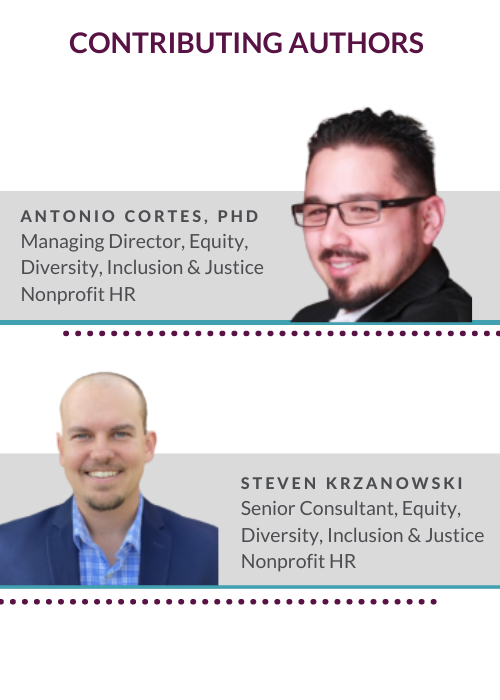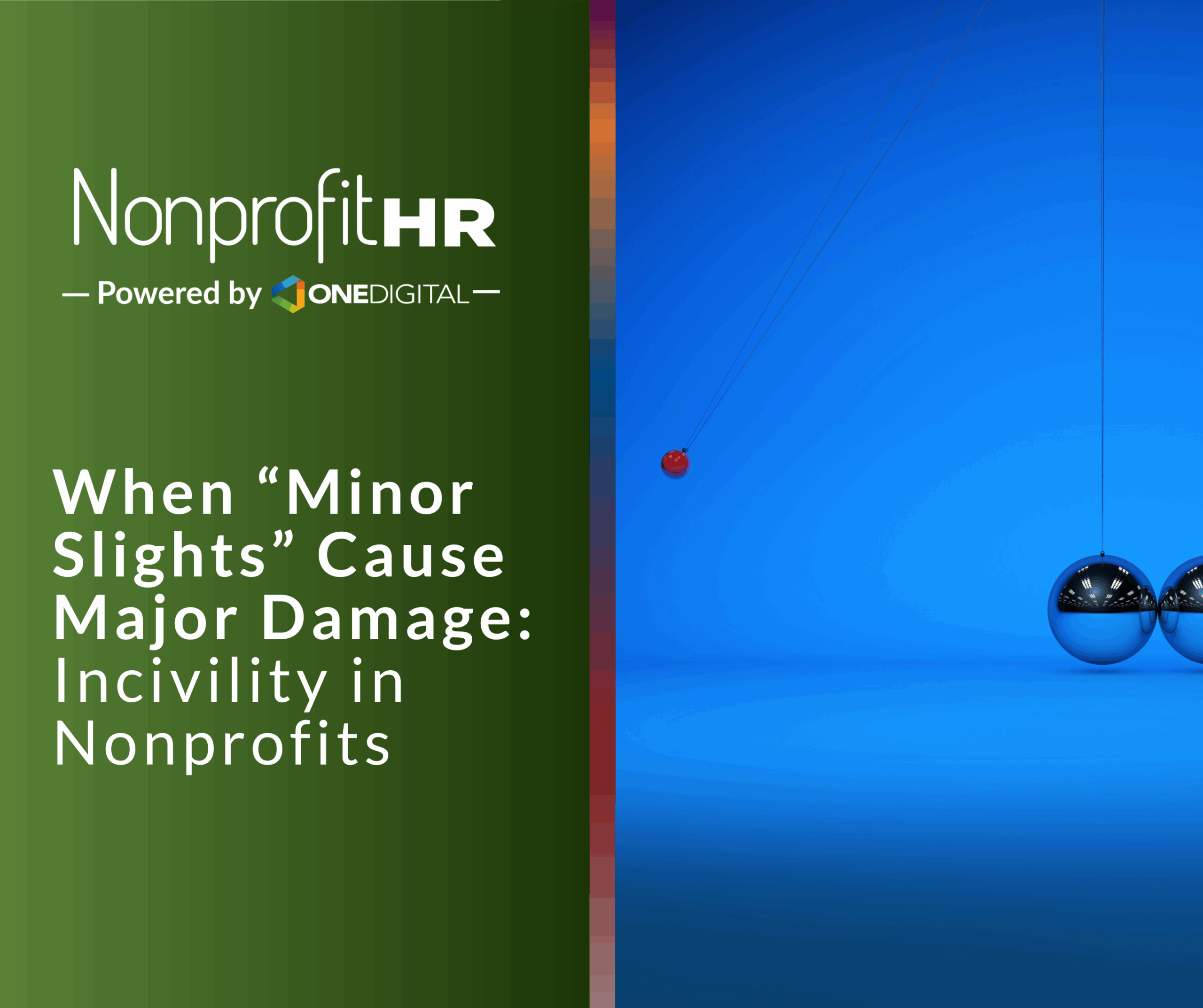WTOP: 5 ways nonprofits can…
Now more than ever, diversity, equity and inclusion are taking center stage—and rightly so.
After doing this work for a number of years, our team knows with certainty that integrating the work across the organization is critical to its success. Any time DEI lives on its own as a project, or you have a DEI team that is operating out on its own, organizational change will be fragmented, at best. DEI strategy needs to be a part of the fabric of the organization and link to the overarching organizational strategic plan to be effective. Benefits of an integrated DEI strategy include enhanced decision making, increased financial performance and strengthened employee engagement.
If your organization already has a DEI task force or advisory team, a great next step is to begin bridging the gap between the people who are doing the DEI work and the organization itself by overlaying DEI onto other areas where it may not be present. Embedding DEI into your systems and considering how your workforce interacts with one another also ensures long-term sustainability of DEI efforts. Doing so will also help your organization stay relevant, innovative and connected to your community.
Here’s what is most important: Regardless of where your organization’s starting point is, there are three essential elements to look at as you begin to integrate DEI across your organization. They are: transparency, power-sharing and accountability.
View part one (transparency) and part three (accountability) of the series.
Part Two: Power-Sharing
Organizations struggle with diversity where power is concentrated, such as on senior leadership teams and boards. Due to the historical hierarchical nature of organizations, finding a balance between the different levels of power-sharing to employ across the decision-making continuum can be hard. Power-sharing is about understanding the organizational structure and working within those confines to flatten the power structure. This allows leaders to rethink what distribution of power means within their organization and for diverse voices to influence decision making. Thus, in order to share power, you must first understand where power is concentrated, if there are existing trends about where it is concentrated and who’s not at the decision-making table.
However, power can’t be shared 100% of the time. There are three levels of power-sharing: voice, vote and view. Voice is when leadership listens to the voices of employees and uses input to influence decisions. Vote is when employees have active involvement in decision making and what the outcome is going to be. View is when leadership has already made the decision and simply communicates to employees what it is (and perhaps, how they came to that outcome). These different levels give opportunities for employees to feel included and connected, but also it disrupts bias because sharing power and elevating diverse vantage points allow for better decision making and breaks up a potentially homogenous group sitting in the seat of where power is concentrated.
It’s important in an equitable environment to make time for voice, vote and view. Recognize when it’s appropriate to make an executive decision, when those voices need to be brought to the table to influence those decisions and when staff need to have an active role in that decision making.
Power-sharing is primarily between leadership and staff, but sometimes it can show up among smaller defined groups. For example, larger organizations will often have teams that are responsible for certain business objectives, and those teams may need to have power-sharing in decision making within their area of focus. There are also temporary instances of power-sharing, such as ad-hoc committees. In these scenarios, there is a limited time frame associated with which this group will have power for a specific area of focus. However, be wary that sometimes when a single team has immense power, it can lead to gatekeeping around how decisions are made. And despite people having more power and knowing they have influence on those decisions within those teams, a gap can potentially emerge between the individual’s perception of their level of power within their team versus their level of power within the organization overall.
When all is said and done, those who have the power have to make the decision to share it, and it’s about helping them understand why: They will make better decisions because of it.
Diversity:
- Who is present?
- What identities are there?
- What identities are not?
Equity:
- How are your people management systems working together?
- Are things fair/equitable in compensation, promotion and across the full HR lifecycle?
- Are your people management systems creating opportunities for people to flourish in their role and organization as a whole?
Inclusion:
- What does the sense of belonging—the employees’ connection to the organization—look like?
- Do you have a sense of their satisfaction level with the work they’re achieving?
- Do you have a sense of how they see themselves as they relate to others?






























